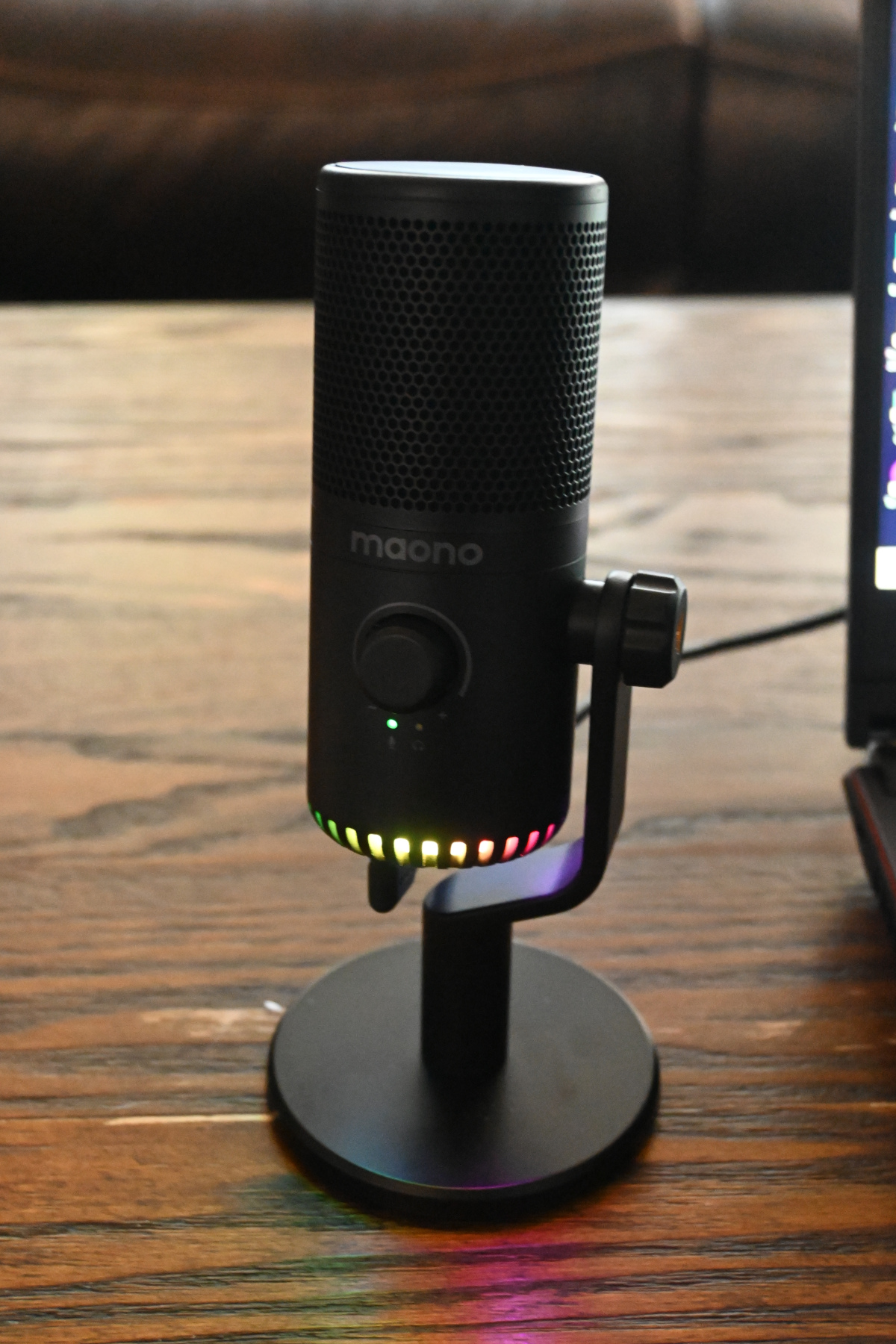Search
[{{{type}}}] {{{reason}}}
{{/data.error.root_cause}}{{{_source.title}}} {{#_source.showPrice}} {{{_source.displayPrice}}} {{/_source.showPrice}}
{{#_source.showLink}} {{/_source.showLink}} {{#_source.showDate}}{{{_source.displayDate}}}
{{/_source.showDate}}{{{_source.description}}}
{{#_source.additionalInfo}}{{#_source.additionalFields}} {{#title}} {{{label}}}: {{{title}}} {{/title}} {{/_source.additionalFields}}
{{/_source.additionalInfo}}- Details
- Category: Hardware
- By Cheryl Gress
- Hits: 2276
Maono DM30 USB Microphone

Maono DM30 USB Microphone
Manufactured by: Maono
Release date: August 23, 2022
Pickup type: Condenser
Polar pattern: Cardioid
Sensitivity: -4dBFS (1V/Pa at 1kHz)
Frequency Response: 20Hz – 20kHz)
MSRP: $49.99
(Amazon Affiliate Link)
Thank you Maono for sending us this microphone to review!
Gamers seem to be attracted to RGB colors and the DM30 delivers with the ability to hard-set this microphone to seven preset colors, rotating between them, or turn them off altogether. The price point of $49.99 (currently has a $10 off coupon available on Amazon and Maono’s site) is quite reasonable for this small yet powerful USB microphone.
Like many USB microphones, this one acts as both a sound device and microphone device. If you don’t wish to plug in your headset directly to this microphone, you’ll have to change your default sound device after plugging this microphone in. There is software available on Maono’s website, but they’re optional if you’re happy with the default settings.
As a cardioid microphone, the DM30 picks up most of the audio above the volume knob. The closer to the microphone you are, the louder it will be. Noises behind and to the side of the microphone won’t be picked up as clearly.
Strong Points: Sounds great; sturdy design; customizable; low-cost
Weak Points: Limited color options
The build quality of the DM30 is sturdy and I like the stand design much better than the tripod used on the PM471 microphone that we recently reviewed. With the DM30’s design, we don’t have to worry about losing the rubber foot pieces!
The volume knob adjusts the gain level and if you press it in, the microphone will be muted. Below the volume knob, you’ll see a light indicating if the microphone is on (green) or muted (red). On the bottom of the microphone, you’ll find the USB connector plug, a 3.5mm headphone jack, and a button that adjusts the RGB settings.
Changing the RGB settings on the DM30 or turning them off can be done by pressing the button on the underside of the microphone. Here are the colors available: red, orange, yellow, green, cyan, blue, purple, and a rotating mixture of all of the above. Alternatively, you can adjust the RGB and other settings in the Maono Link software.

The software handles everything that the microphone does, but with more options. In the software, you can set the tone to Deep (default), Natural, Bright, and Legacy. The Gain, volume, and RGB brightness can all be tweaked with slider bars. If you go into the advanced tab you can adjust the EQ, limiter, and compressor settings.
I’m not sure what the signal to noise ratio is on this microphone, but I think it sounded good on my recent stream of Roadwarden. You can give it a listen to here:
If you’re in the market for a nice sounding microphone under $50, the Maono DM30 is worth looking into. Maono stands behind their products with a 1 year warranty. Unlike other microphones we have reviewed from Maono, the DM30 will be available in multiple colors, including black, white, pink and purple.








